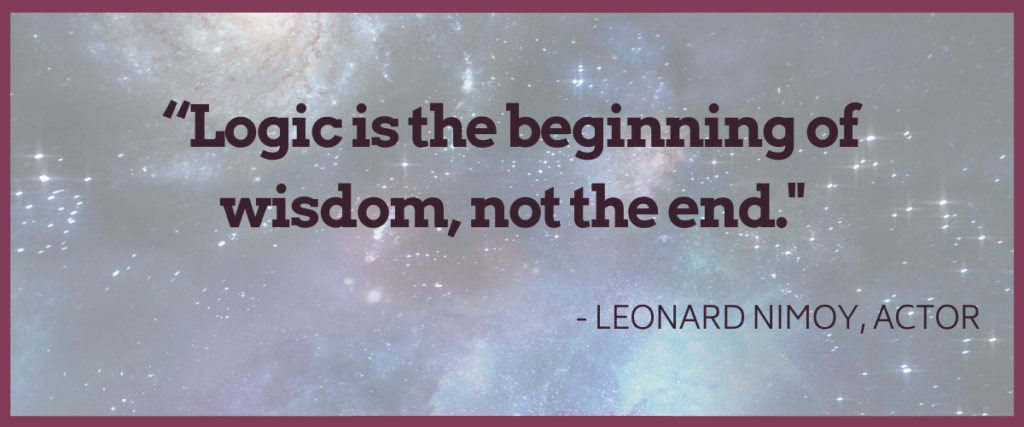March 7th, 2022

When you hear the term ‘logic model’ does a nervous quiver runs down your spine? Or the opposite – do you absolutely love them?
How people initially feel about the term definitely varies, but the bottom line is this: having a visual summary of what your program does and the difference it’s expected to make will benefit your organization.
Both logic models and impact models accomplish this, but in different ways. Both should be created collaboratively, to ensure all staff members are enrolled in defining the key components of the model.
What is a logic model? It is a linear one-page document that defines a program’s goals, activities, outputs, inputs, outcomes, and impact. Logic models serve an important role as a visual summary of the program. Ideally, it’s created at the start of program design.
The go-to resource for creating a logic model is W.K Kellogg Foundation’s Logic Model Development Guide (2004), which defines a logic model as follows: “The program logic model is defined as a picture of how your organization does its work—the theory and assumptions underlying the program. A logic model links outcomes (both short- and long-term) with program activities/processes and the theoretical assumptions/principles of the program.”
What is an impact model? It still answers the two core questions: what does your program do, and what change is expected as a result? But it departs from the traditional linear format to include whatever information and format your organization will use. The impact model reflects your organization’s culture, right down to brand colors, making it usable in development, marketing, and communications efforts.
Both models provide direction and clarity for program evaluation, along with an insight into what methodology and measurements to use and a framework for discussing program evaluation elements with staff. You be the judge of what is truly best. If you have to create a logic model to satisfy a funder, do that. If you prefer a customized visual summary, do an impact model instead. At the end of the day, you want a visual summary that depicts what your program does and what change is expected as a result. It is a cornerstone of developing a realistic and meaningful program evaluation plan. And, with the element of visualization, it literally gets everyone onto the same page.
If you want to learn more about the difference between logic and impact models, and how to use both of these in your organization’s work, register for my upcoming workshop Logic Models Made Simple… and Impact Models too! on Thursday, 5/12! Make sure to use the promo code evalmadesimple to receive a discount; note that the code is case sensitive.
(This blog post is a summary excerpt from my book Nonprofit Program Evaluation Made Simple: Get your Data. Show your Impact. Improve your Programs. Bonus: every book comes with free access to my companion website, which is full of free downloadable templates and resources you can use right away – look for access instructions in the book’s Introduction. Get your copy now on Amazon., Barnes & Noble, or wherever books are sold!)
Program evaluation is a vital tool for any professional in the nonprofit sector, but teaching these concepts to undergraduates new to the field can be challenging.
When I heard that Lander University’s Professor Dr. Shaunette Parker used my book Nonprofit Program Evaluation Made Simple. Get your Data. Show your Impact. Improve your Programs as a required textbook in her undergraduate program evaluation course this year. I couldn’t wait to hear all about it!
She shared that her students used the book (and the companion website) to help them create evaluation plans and data collection tools. Dr. Parker called the book a “real life tool” and was able to draw from her extensive experience in nonprofits while teaching. “It just felt very comfortable. I could stand behind the information so it wasn’t difficult for me to share.”
Watch our full 15 minute conversation now:
Western Michigan University Presents:
Eval Café: A Discussion with Chari Smith on Fostering Evaluation Organizational Cultures
Wednesday, 3/30 from 9-10am PST
More Info
Logic Models Made Simple… and Impact Models too!
Thursday, 5/12/2022 from 9-11am PST
Space is limited, grab your spot today.
Register Here
Chari accurately captured the fundamental goals and mission of our organization and transformed our input into a clear evaluation process that helps us assess the impact of our programs on the lives of the families that we serve. Now we have an amazing way to measure the physical, emotional, and mental effects of our programs and to guide change, ensuring that we are delivering services in the most effective way possible.
Brandi Tuck, Executive Director, Portland Homeless Family Solutions
Get periodic emails with useful evaluation resources and industry updates.
We promise not to spam you!